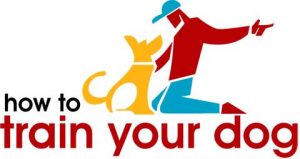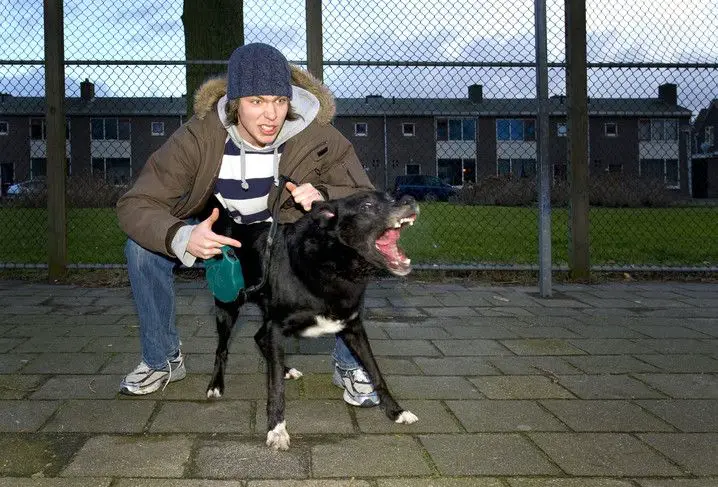Aggression is a normal part and a way of life animals usually behave. Although, aggression in dogs is also a very serious behavior problem, which pet owners should deal with early. Many times, people only consider aggressive behavior in dogs to be a problem when it comes to biting, though, this can even include lesser degrees such as snarling, growling, teeth baring and snapping at the air and so on.
Luckily aggression in dogs is preventable, especially if in a way you understand levels of canine growth stages and the factors that contribute to such habits of aggressive behavior.
Here, a simple guide on how to deal with an aggressive dog.
Table of Contents
How to Calm an Aggressive Dog?
If your dog has a history of being aggressive in the past or you suspect he could become aggressive, take time to analyze the situation that could have upset him, like who bore or flickered his aggression? When and where did the incidence occur? What else was going on at the time? Such questions can help you mitigate the situations that mainly trigger your dog’s aggressiveness and provide insight into the reasons for calming his aggressive behavior.
More than anything, you need an accurate diagnosis before you can consider calming your dog.
Ideally, aggressive behavior problems in dogs can be classified in different ways. And all this is done to evaluate the real purpose and scope of your dog’s aggression. If you think of aggression this way, without a doubt will you be able to determine what motivates your dog to behave aggressively and identify what he really hopes to gain from such behavior. After understanding what influences your dog aggressive behavior, calming him will also be easy.
Even more so, speaking to your dog in a calm voice, like asking him to “Go away” or “Go home” or “Nice dog”, can do wonders to calm your dog down. You should try it. It really works — totally!
My Dog Attacks Other Dogs:
There are several reasons why a dog may act aggressively toward another, like he may be afraid, become stressed because his space is being violated, may be very protective of you, may be curious or over-excited about something and so on. So, many times when you’re dealing with dog-to-dog aggression cases, it’s important to understand what your dog is feeling and what message he’s trying to pass across if any.
For instance, when your dog meets a new dog and you realize that he is getting stressed, that’s when you’re supposed to interrupt before the situation worsens.
Sometimes when dealing with dog aggression issues against another dog, it’s best to take a dog’s health, temper and other relevant preferences into account while still figuring out other appropriate solutions.
To stop dog-to-dog aggressiveness, you can also try:
- Teach your dog avoidance
- Create space or block the other dog
- Desensitize your dogs to other dogs
- Take your dog to a dog-to-dog aggression training…etc.
How to Socialize an Aggressive Dog?
Most wild dogs grow up in packs, and they are very social towards each other. Many times, a dog becomes more social adept by cooperating with other canines and adopting their verbal behavior and body language.
Thus, the boundaries set by dogs in a pack are normally very clear and solid, and young puppies learn to respect and honor their elders or else risk being thrown out from the pack.
Similarly, domestic dogs start to socialize when they are little, and when they are introduced to a human household, socialization with humans start to yield.
The initial socialization phase of a dog is between 4-12 weeks, and during this time their social skills and cooperation with other dogs and people usually grows to a strong bond. Though, on the other hand, many dog owners quite often have a tendency to adopt other older dogs, who somehow were not very well socialized at their early stage.
Thus it’s very important to test such a dog’s socialization skills, like how does he behave towards you and other pets around your home – does he seem scared or aggressive? Or does he back and shy away when you come close to him? Or does he get scared and shy away from other dogs and people? If you realize any of these signs, more likely that dog wasn’t socialized quite well in his early days.
Try a few of these tips and tricks, and see whether such a dog social skills will improve around other dogs and people:
- Socialize your dog with your family first
- Be casual by acting like his awful behavior isn’t such a big deal
- Introduce other people slowly
- Resist tugging while walking….etc.
How to Stop Aggressive Behavior in Dogs?
Could you be wondering about what to do with an aggressive dog? Why not consider enrolling your dog in some of the many online dog training course offered by experienced dog professionals online? Essentially, mitigating aggressive behavior in dogs is best handled by such people or a reputable animal trainer. Though there a group of people who call themselves animal behaviorists or trainers, but rather are by far, very poorly qualified. You should avoid seeking any professional help from such people at all times, because they only do more harm to your dog and end up making him even more violent. In other words, excessive force and bizarre strategies seem to be their main tools.
When looking for a professional animal behaviorist or trainer, it’s great to seek advice from your veterinarian first and also interview trainers in order to find which animal trainer is best suited for the job. To stop aggressive behavior in dogs, you must first analyze all the details that influence your dog’s aggressive behavior and stop such situations from occurring next time. For instance, if your dog growls every time you try to draw him from the couch, don’t allow him to sit on the couch. Simple!
The first impulse should be to minimize any contact between the aggressive dog and the person or people he is most violent to. On the other hand, this scheme only seem to encourage the dog by making him believe that he is more dominant than other people around him, and so he tends to tighten his leadership status of the household. Consequently the person who seems to have difficulties with the dog, eventually becomes the sole provider of everything the dog needs — food, exercise, praise, and all kinds of play activity.
Such a person is supposed to figure out a way of training the dog, like teach him to obey some basic obedience commands such as sit, come and stay down. This puts the dog in a submissive state and, hence, also avoids being bitten. Consequently, all other family members should totally constrain the dog any play, food or show any signs of empathy. The dog must focus on that single person (the animal behaviorist or trainer) and must look that person as his sole provider of anything he needs.
As such, whenever your dog show signs of submissive behavior, it’s great to reward him with treats. A few examples that show signs of a dog’s submissive behavior are such as ears laid back, avoiding eye contact, crouching, rolling over, licking and more. Any admirable gestures that suggest your dog responds to submissive behavior should be praised and rewarded with some occasional food treats. Your dog should earn everything for submitting!
Above all else, all aggressive dogs can all the same be trained under the right circumstances and by an experienced animal behaviorist or trainer only. Although, before anyone can think of starting such a program in order to streamline the odd behavior of an aggressive dog, they must realize their dog might never cope well with other people or children and may attack if provoked. And now because you’re aware of all the hard facts about how to deal with an aggressive dog, make sure you take great care of your dog by following everything that’s included in this guide. This way, interaction between both you and your dog and other people around you will always be refreshing, with no worries of any reported dog attacks at all.




